James CookScotland editor
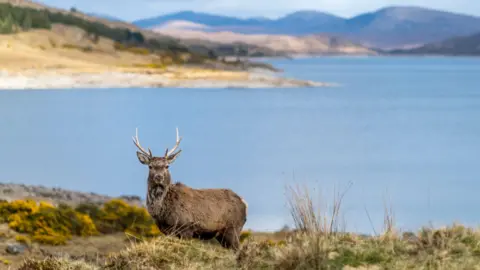 Getty Images
Getty ImagesThe question “who owns Scotland?” stirs up strong emotions.
This is not just about land. It deals with people, profit – and where power lies.
Scotland is unusual because it has one of the most concentrated patterns of land ownership anywhere in the western world.
Land reformers calculate that 421 individuals, corporations, asset management groups and foreign trusts own more than 40% of all the nation’s rural land.
“It’s shocking,” said Dr Josh Doble, the director of policy and advocacy at Community Land Scotland.
“We are an international anomaly.”
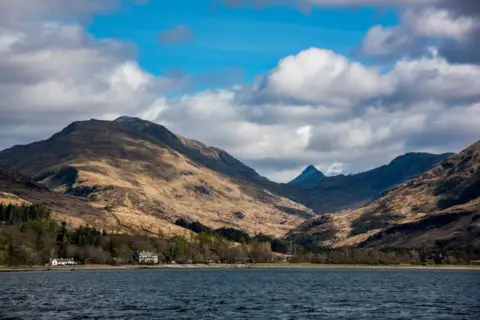 Getty Images
Getty ImagesLawmakers have been grappling with this issue for a long time but the pace of change has picked up since devolution in 1999.
The Land Reform (Scotland) Bill is the Scottish government’s latest wide-ranging and controversial attempt to tackle the issue.
It aims to make community buy-outs easier, to provide tenants with more information about the management of their land, and to give ministers the power to break up some large estates at the point of sale.
SNP ministers say the law gives a voice to the voiceless, handing communities a greater say over their futures.
Opponents have called it an unworkable and unprecedented assault on private property rights. There has even been talk of “class war”.
Sarah-Jane Laing of Scottish Land and Estates, which represents many large landowners, says the provisions within the act are being “driven by ideology”.
She claims the Scottish government “want to see fragmentation and break up of estates as an end in itself” – an aim Ms Laing describes as “really damaging for people, jobs and nature”.

The debate has its roots in the profit-driven clearances of the 18th and 19th centuries when landowners drove people from their estates to make way for sheep and cattle.
They know all about that in Knoydart in the west Highlands, a rugged peninsula accessible only by boat or a two-day hike.
In the 1850s, hundreds of Highlanders were violently evicted from Knoydart. Many were forced to emigrate to Canada.
It was one of the events which led to a public inquiry into conditions in the Highlands and, in 1886, to Scotland’s first major land reform.
The Crofters Holdings Act was enacted by William Gladstone’s Liberal government and granted security of tenure to small-scale tenant farmers known as crofters.
These days Knoydart is under community ownership. In 1999 locals bought up much of the land where they lived and worked and they now say the area is thriving.
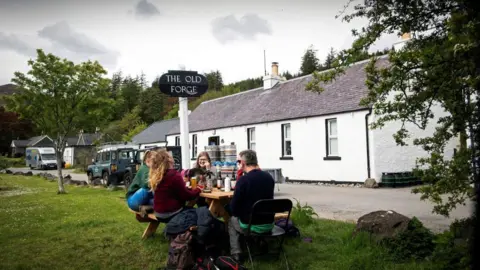 Getty Images
Getty ImagesThe peninsula is home to Great Britain’s most remote pub, The Old Forge in Inverie, which is run by Stephanie Harris.
She told us that Knoydart had gone from strength to strength over the past 25 years.
“There’s lots more people live here, there’s lots of kids here now, there’s more private businesses and community enterprises going,” she explained.
“There’s a lot more opportunities and the fact people still want to come here I think is showing that it’s working.”
Davie Newton was instrumental in much of that change, building and renovating a pub, shop, village hall and more while also helping to run the Knoydart Foundation which manages the land.
He said community ownership had led to the planting of 600,000 trees, the revitalisation of a hydro-electric scheme and the building of many new homes.
“As the community makes decisions over its own future, it gains confidence by making decisions and getting them right, it gains experience by making decisions and getting them wrong,” he said.
The new Land Reform Bill aims to make it easier for other communities to follow in Knoydart’s footsteps.
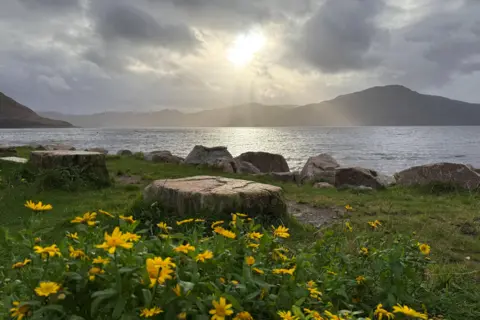
But clauses which will hand ministers powers to force the break-up of some big estates are deplored by many landowners and their representatives.
Sarah-Jane Laing said it was not true to say that “big is bad” when it comes to Scottish estates.
“It’s almost impossible to deliver some of the peatland restoration, the river restoration – alongside building houses, bringing forward renewables, creating businesses – unless you have scale of ownership,” she said.
Scotland’s biggest private landowner is the Danish billionaire Anders Povlsen who is well known for his interest in “rewilding”.
Ms Laing met us at a more modest but still fairly large landholding – Preston Hall Farm in Midlothian to demonstrate her point – that big can in fact be good.
The 650-hectare estate is home to a range of enterprises, from coffee roasters to picture framers to a pottery studio.
“It’s the variety of things that are going on which makes it exciting to manage and run,” said the landowner, Will Callander.
“To be blunt, we are not making big sums of money. We’re not sitting here driving fast cars and living the high life.
“We live here, we work here, and we want to be surrounded by fun, exciting, happy people.”
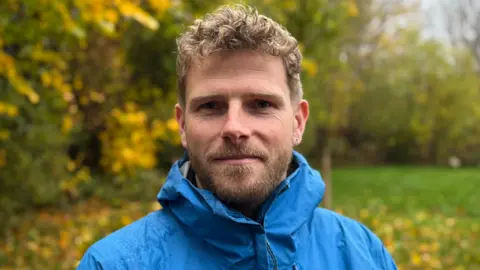
Mr Callander has concerns about the latest land reform legislation which has already generated some talk of legal action to challenge some of its provisions.
“Certainty is what we need,” he said.
The new bill was supported by Labour and the Liberal Democrats but the Conservatives voted against, calling it unworkable and devastating.
The Scottish Greens abstained, saying it fell far short of what Scotland needed – and accusing the SNP of failing to stand up to landed elites.
Many land reform campaigners agree with the call for more radical reform.
Dr Josh Doble said Scotland had a rural housing crisis, growing inequality, depleted biodiversity and limited economic opportunities for local people.
“All of that stems back to the fact that we have a very small number of people who control what happens in those areas,” he argued.
“If we had a much more democratic and equitable way in which land was shared amongst people, we would start to address those issues in an actually meaningful way.”
Like many claims in this debate, that is hotly disputed.
Hundreds of years after they began, battles over land reform look set to rage on in 21st century Scotland.
Disclaimer : This story is auto aggregated by a computer programme and has not been created or edited by DOWNTHENEWS. Publisher: BBC








